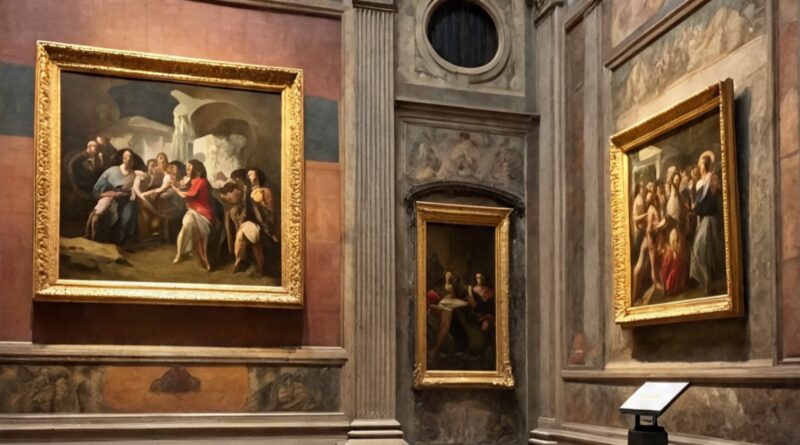The Cultural Influence of Renaissance Art
The cultural influence of Renaissance art is one of the most powerful and transformative movements in human history. The Renaissance was not just about paintings or sculptures it was a rebirth of knowledge, creativity, science, and philosophy. From the 14th to the 17th century, Europe experienced an explosion of artistic innovation that still shapes modern culture, architecture, education, and even technology today. The ideas from this period changed how people viewed humanity, religion, and the world around them.
What Was the Renaissance?
The Renaissance was a period of revival that began in Italy and later spread across Europe. It marked the end of the Middle Ages and the beginning of a new era focused on humanism, learning, and creative expression. Artists began studying nature, anatomy, mathematics, and perspective to create more realistic and meaningful art.
Some of the most iconic names of this era include:
Leonardo da Vinci
Michelangelo
Raphael
Donatello
Botticelli
These artists were not just painters or sculptors they were thinkers, scientists, architects, and inventors.
Humanism and the New View of Humanity
One of the biggest cultural shifts inspired by Renaissance art was the rise of humanism. Instead of focusing only on religion, artists began highlighting the beauty, power, and potential of human beings. Art became more emotional, realistic, and expressive.
Before the Renaissance, religious figures looked stiff and symbolic. But during the Renaissance, they looked human full of life, expression, and natural movement.
This change influenced:
✅ Literature
✅ Philosophy
✅ Education
✅ Society’s understanding of human identity
Humanism is still a core value in modern culture.
The Influence of Renaissance Art on Science and Innovation.
Renaissance artists helped spark scientific discoveries. Leonardo da Vinci’s anatomical sketches, for example, helped people understand how the human body works. His studies in engineering and flight inspired future inventions like airplanes, parachutes, and robotics.
Perspective and geometry in Renaissance art also changed architecture and design. Buildings became more symmetrical, balanced, and aesthetically pleasing.
Modern fields influenced by Renaissance innovation include:
Engineering
Architecture
Anatomy
Mathematics
Astronomy
Even today’s technology, such as 3D modeling and virtual reality, is built on principles discovered during the Renaissance.
Impact on Religion and Spiritual Expression
Religion was still an important part of life during the Renaissance, but the way it was represented changed. Instead of flat symbolic figures, religious art became emotional and relatable.
Paintings like The Last Supper and The Creation of Adam made religious stories feel personal and real. This shift encouraged deeper thinking and reflection.
The Church also played a major role by sponsoring artists, leading to masterpieces found in:
The Vatican
Churches in Florence
Cathedrals across Europe
This partnership between art and religion strengthened cultural identity and preserved historical values.
Influence on Modern Architecture and Design
The architecture of the Renaissance continues to inspire modern buildings worldwide. Features like domes, arches, columns, and symmetry are still used in museums, government buildings, and universities.
Examples include:
The U.S. Capitol Building
St. Peter’s Basilica
The Louvre Palace
The Renaissance brought a new understanding of beauty, proportion, and harmony ideas that still define modern design.
Renaissance Art and Modern Education
Art education, science education, and philosophy today still reflect Renaissance principles. Schools encourage creativity, critical thinking, and exploration values developed during this cultural movement.
Subjects like:
✅ Art History
✅ Literature
✅ Philosophy
✅ Architecture
✅ Anatomy
All have roots in Renaissance learning.
How Renaissance Art Influences Today’s Popular Culture
Renaissance art continues to inspire:
🎨 Fashion
🎨 Movies
🎨 Digital art
🎨 Video games
🎨 Advertising
🎨 Interior design
Modern artists still study Renaissance techniques like realism, shading, and perspective. Even AI-generated art often follows these principles.
Movies such as The Da Vinci Code and series like Medici bring Renaissance history to life, showing that the influence of this era remains strong in entertainment.
Why the Cultural Influence of Renaissance Art Still Matters
The Renaissance taught the world that creativity and knowledge can transform society. It encouraged people to think, explore, and challenge old ideas. This mindset helped shape the modern world.
The Renaissance influence remains visible in:
✅ Modern education
✅ Architecture
✅ Innovation
✅ Art and design
✅ Culture and human values
It continues to remind us that imagination and curiosity can change history.
Conclusion
The cultural influence of Renaissance art is a lasting legacy that continues to shape modern society. From humanism to scientific innovation, from architecture to digital creativity, the Renaissance left a blueprint for progress. It was not just a period of art it was a turning point that changed how the world thinks, creates, and evolves.



